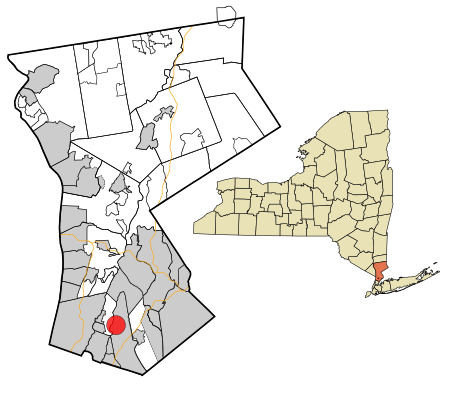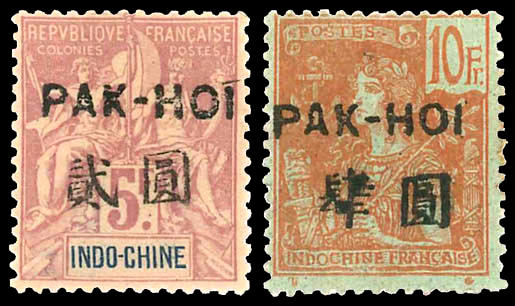Beihai
| |||||||||||||||||||||||||||||||||||||||||||||||||||||||||||||||||||||||||||||||||||||||||||||||||||||||||||||||||||||||||||||||||||||||||||||||||||||||||||||||||||||||||||||||||||||||||||||||||||||||||||||||||||||||||||||||||||||||||||||||||||||||||||||||||||||||||||||||||||||||||||||||||
Read other articles:

Canadian theologian and philosopher (1928–2019) Jean VanierCC GOQVanier in 2012Born(1928-09-10)September 10, 1928Geneva, SwitzerlandDiedMay 7, 2019(2019-05-07) (aged 90)Trosly-Breuil, FranceNationalityCanadianKnown forFounder of L'ArcheRelativesGeorges Vanier, fatherPauline Vanier, motherThérèse Vanier, sisterAwardsOrder of Canada, 1972National Order of Quebec, 1992Legion of Honour, 2003Humanitarian Award, 2001Pacem in Terris Award, 2013Templeton Prize, 2015DenominationCatholic…

Miss USA 2022Tanggal3 Oktober 2022TempatGrand Sierra Resort, Reno, NevadaPembawa acaraZuri HallJulissa BermudezMicah JessePengisi acaraChloe FlowerStasiun televisiFYIKCNL-DHuluPeserta51Finalis/Semifinalis16PemenangR'Bonney Gabriel Texas(Morgan Romano ∞ Carolina Utara)PersahabatanCourtney Schuman( Alaska)FotogenikAngel Reyes( Illinois)Kostum Negara Bagian TerbaikR'Bonney Gabriel Texas← 20212023 →lbs Miss USA 2022 akan menjadi kontes Miss …

Airport in Ambérieu-en-Bugey, FranceAmbérieu-en-Bugey Air BaseDétachement Air 278 Ambérieu-en-Bugey Advanced Landing Ground (ALG) Y-5Jodel D140C MousquetaireIATA: noneICAO: LFXASummaryAirport typeMilitary / public useOwnerGovernment of FranceOperatorArmée de l'air et de l'espaceLocationAmbérieu-en-Bugey, FranceElevation AMSL823 ft / 251 mCoordinates45°59′14″N 005°19′42″E / 45.98722°N 5.32833°E / 45.98722; 5.32833MapLFXALocation of airport …

Ruth McDevittMcDevitt, 1950.LahirRuth Thane Shoecraft(1895-09-13)13 September 1895Coldwater, Michigan, A.S.Meninggal27 Mei 1976(1976-05-27) (umur 80)Hollywood, Los Angeles, California, A.S.Nama lainRuth Thane McDevittPekerjaanAktrisTahun aktif1949–1976Suami/istriPatrick McDevitt (m. 1928–1934; his death) Ruth Thane McDevitt (née Shoecraft; 13 September 1895 – 27 Mei 1976)[1] adalah seorang aktris panggung, film, radio dan televisi asal Amerika Serikat.…

هذه المقالة عن المجموعة العرقية الأتراك وليس عن من يحملون جنسية الجمهورية التركية أتراكTürkler (بالتركية) التعداد الكليالتعداد 70~83 مليون نسمةمناطق الوجود المميزةالبلد القائمة ... تركياألمانياسورياالعراقبلغارياالولايات المتحدةفرنساالمملكة المتحدةهولنداالنمساأسترالياب…

Сельское поселение России (МО 2-го уровня)Новотитаровское сельское поселение Флаг[d] Герб 45°14′09″ с. ш. 38°58′16″ в. д.HGЯO Страна Россия Субъект РФ Краснодарский край Район Динской Включает 4 населённых пункта Адм. центр Новотитаровская Глава сельского посел…
周處除三害The Pig, The Snake and The Pigeon正式版海報基本资料导演黃精甫监制李烈黃江豐動作指導洪昰顥编剧黃精甫主演阮經天袁富華陳以文王淨李李仁謝瓊煖配乐盧律銘林孝親林思妤保卜摄影王金城剪辑黃精甫林雍益制片商一種態度電影股份有限公司片长134分鐘产地 臺灣语言國語粵語台語上映及发行上映日期 2023年10月6日 (2023-10-06)(台灣) 2023年11月2日 (2023-11-02)(香港、…

「アプリケーション」はこの項目へ転送されています。英語の意味については「wikt:応用」、「wikt:application」をご覧ください。 この記事には複数の問題があります。改善やノートページでの議論にご協力ください。 出典がまったく示されていないか不十分です。内容に関する文献や情報源が必要です。(2018年4月) 古い情報を更新する必要があります。(2021年3月)出典�…

Pita suara Laringospasme adalah kejang singkat dari pita suara yang sementara membuat sulit untuk berbicara atau bernapas.[1] Seringkali penyebabnya tidak dapat diketahui.[1] Tapi laringospasme dapat dikaitkan dengan penyakit refluks gastroesofagus (GERD).[1] Laringospasme terjadi pada GERD karena ketika cairan perut yang mendorong tenggorokan dan membuat kontak dengan pita suara kemudian menyebabkan pita suara tersebut kejang.[1] Gejala spasme laring mirip dengan…

Cover to Saga #1 (March 2012). Art by Fiona Staples. The following is a list of characters from Brian K. Vaughan and Fiona Staples' epic space opera/fantasy comic book series Saga, which debuted in 2012 by Image Comics. It depicts a husband and wife from long-warring extraterrestrial races, Alana and Marko, fleeing authorities from both sides of a galactic war as they struggle to care for their newborn daughter, Hazel, who occasionally narrates the series.[1][2][3] In the…

Oleggio Castello komune di Italia Oleggio Castello (it) Tempat Negara berdaulatItaliaDaerah di ItaliaPiemonteProvinsi di ItaliaProvinsi Novara NegaraItalia Ibu kotaOleggio Castello PendudukTotal2.214 (2023 )GeografiLuas wilayah5,94 km² [convert: unit tak dikenal]Ketinggian293 m Berbatasan denganArona Gattico-Veruno Paruzzaro Comignago SejarahSanto pelindungMartinus dari Tours Informasi tambahanKode pos28040 Zona waktuUTC+1 UTC+2 Kode telepon0322 ID ISTAT003109 Kode kadaster ItaliaG02…

Lokasi Paris Centre Balai Kota Paris Centre (bekas gedung balai kota Arondisemen ke-3 Paris) Paris Centre adalah sebuah wilayah administratif dari kota Paris yang meliputi wilayah arondisemen ke-1, ke-2, ke-3 dan ke-4 yang berlokasi di pusat kota Paris. Referensi lbsArondisemen kota di ParisArondisemen(quarter) Paris Centre Arondisemen ke-1 Saint-Germain-l'Auxerrois Halles Palais-Royal Place-Vendôme Arondisemen ke-2 Gaillon Vivienne Mail Bonne-Nouvelle Arondisemen ke-3 Arts-et-Métiers Enfants-…

French historian (1921–2019) Pierre RichéRiché in 2017Born(1921-10-04)4 October 1921Paris, FranceDied6 May 2019(2019-05-06) (aged 97)NationalityFrenchAlma materFaculté des lettres de ParisOccupationHistorianChildrenPascal RichéWebsitepierreriche.free.fr Pierre Riché (October 4, 1921 – May 6, 2019)[1] was a French historian specializing in the early Middle Ages and the year 1000 (French: An mil or An mille). Biography After studying at the Faculté des lettres de Paris,…

African-American women's voting rights in the USA Further information: Black suffrage in the United States Part of a series onFeminism History Feminist history History of feminism Women's history American British Canadian German Waves First Second Third Fourth Timelines Women's suffrage Muslim countries US Other women's rights Women's suffrage by country Austria Australia Canada Colombia India Japan Kuwait Liechtenstein New Zealand Spain Second Republic Francoist Switzerland United Kingdom Cayma…

COVID-19 pandemic in New York (state)A testing center in Staten Island in March 2020. DiseaseCOVID-19Virus strainSARS-CoV-2LocationNew York state, U.S.First outbreakWuhan, Hubei, ChinaIndex caseManhattan, New York CityArrival datemid-February 2020[1](1st positive March 1)[2]Confirmed cases6,390,225[3]Hospitalized cases100,000+ (total)[4] 9,000 (current)Recovered1,000,000+[5]Deaths52,906 (NYSDOH)[3] 39,834 (JHU)[6]Government websitecoronavir…

← Nun Samekh Ayin → Fenisia Ibrani Aram Suryani Arab ס ܣ / ܤ س,س[1] Alfabetturunan Yunani Latin Kiril Ξ - Ѯ Representasi fonemik: s Urutan dalam alfabet: 15 Nilai huruf/Gematria: 60 Samekh (juga Simketh) adalah huruf ke-15 dalam banyak abjad rumpun bahasa Semit, termasuk abjad Fenisia, abjad Aram, dan abjad Ibrani. Melambangkan bunyi /s/. Abjad Arab menggunakan huruf yang berdasarkan huruf Fenisia šin untuk melambangkan /s/; namun glif itu tetap berada di posisi Samekh dal…

Species of mammals belonging to the armadillo order of xenarthrans Giant armadillo Giant armadillo foraging at Nouragues Nature Reserve, Régina Conservation status Vulnerable (IUCN 3.1)[1] CITES Appendix I (CITES)[2] Scientific classification Domain: Eukaryota Kingdom: Animalia Phylum: Chordata Class: Mammalia Order: Cingulata Family: Chlamyphoridae Subfamily: Tolypeutinae Genus: PriodontesF. Cuvier, 1825 Species: P. maximus Binomial name Priodontes maximus(Kerr,…

Bofedal en Bolivie Un bofedal est une zone humide d'altitude considérée comme un pâturage naturel peu étendu mais avec une humidité permanente. Les bofedales se forment dans des zones telles que la Puna dans la cordillère des Andes située à environ 3800 mètres. Elles permettent d'alimenter la faune (lama, vigogne) pendant les longs mois sans précipitation. L'eau qui alimente les bofedales provient principalement de la pluie, de la fonte des glaciers et des affleurements de surface de l…

تشانوت الإحداثيات 37°40′37″N 95°27′23″W / 37.676944444444°N 95.456388888889°W / 37.676944444444; -95.456388888889 [1] تاريخ التأسيس 1873 تقسيم إداري البلد الولايات المتحدة[2][3] التقسيم الأعلى مقاطعة نيوشو خصائص جغرافية المساحة 18.527681 كيلومتر مربع18.527689 كيلومتر م…

Western tributary of the Pearl River For other uses, see Xijiang (disambiguation). Xi JiangLooking across the Xi River from Heshan to Jiujiang, Foshan City.The Pearl River system including the Xi RiverLocationCountryChina and VietnamPhysical characteristicsSource • locationGui Jiang and Xun Jiang in Wuzhou Mouth • locationThe Pearl River Delta on the South China SeaLength2,197 km (1,365 mi)Basin size409,480 km2 (158,100 sq …








